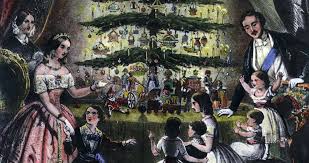Few symbols represent the Christmas season as well as the Christmas tree. Each year, homes around the world are lit up by their festive lights. Strands of tinsel and ornaments reflect brightly in the window as people inside warm themselves by the fire, sipping eggnog and anticipating Santa Claus.
But have you ever wondered where the Christmas tree tradition started? Why do we cut down a tree, bring it indoors, and decorate it? The history of the Christmas tree is longer and more complex than most people realize.
The Importance of Evergreen Trees in Pagan Yule Celebrations
The history of Christmas trees begins with pagan winter solstice celebrations, which made the now-popular symbol controversial in Christian cultures for a time. Evergreens were traditional at midwinter festivals since ancient times, symbolizing the triumph of life and light over death and darkness.
In pagan cultures, evergreens were significant because they stayed green during the winter months. While other trees appeared lifeless, evergreens symbolized life. Many pagan cultures decorated their homes with evergreen boughs to ward off evil spirits during the darkest time of the year.
The Origin of the Christmas Tree in Europe
The first documented Christmas tree is believed to have been set up in 16th-century Alsace, in modern-day France. Historical records show that a Christmas tree was put up in the Strasbourg Cathedral in 1539, and the tradition quickly spread throughout the region. As Germans settled in other parts of Europe, they brought the tradition with them, and by the 18th century, Christmas trees were common in European countries.
It wasn’t until 1848 that the familiar image of a decorated Christmas tree with presents underneath took hold. That year, the Illustrated London News published an engraving of Queen Victoria and Prince Albert gathered around a tree with their children. This image was later reprinted by an American women’s magazine called Godey’s Lady’s Book, popularizing the Christmas tree in the United States.
The History of Christmas Trees in the United States
The Christmas tree faced resistance in the United States due to cultural attitudes and a fear it would reduce labor productivity. Celebrating Christmas was illegal in Massachusetts in the 17th century, and even after the ban was lifted, New Englanders continued to disdain the holiday. However, popular icons, technological innovations, and a desire to unite the country eventually softened attitudes toward Christmas trees.
In the late 19th century, the illustration of Queen Victoria’s tree was published in the United States, with some changes to appeal to American workers. This, along with Thomas Edison’s invention of long-lasting carbon filament lamps, which led to Christmas lights, contributed to the acceptance of Christmas trees in the country. Electric lobbyists even pushed for a “National Christmas Tree” at the White House to showcase the wonders of electricity.
Today, Christmas trees are an integral part of holiday celebrations. More than 25 million live Christmas trees are sold in the United States each year, and the tradition has spread across the globe. What started as a pagan custom has become a cherished symbol of Christmas, connecting generations and bringing joy and festive spirit to homes worldwide.
